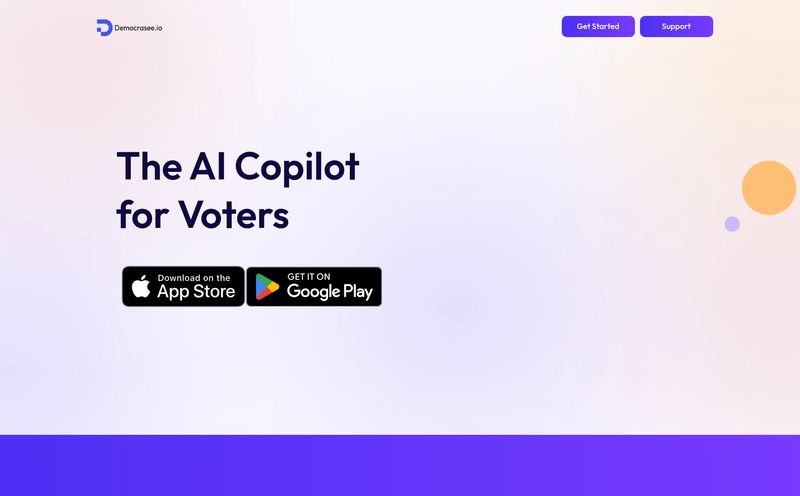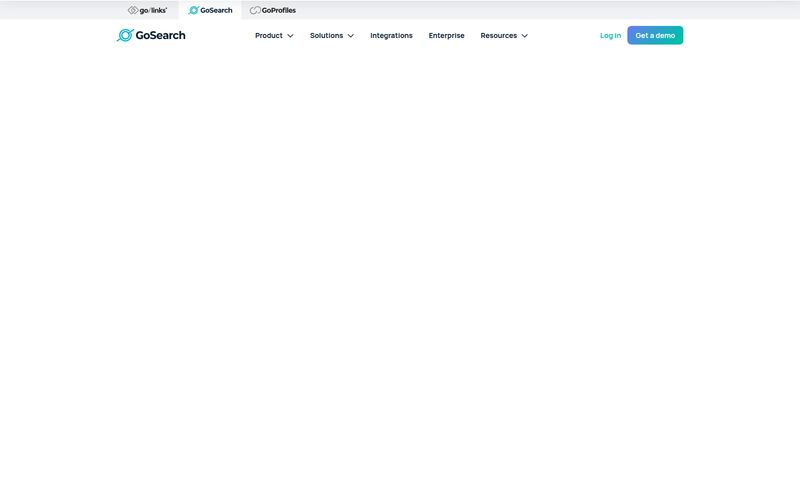The AI hype train is moving at a million miles an hour, and every single company on earth seems to be scrambling to slap a chatbot onto their website. But how many of them are actually... you know, good? Most are glorified FAQ pages that get confused if you ask a question with a bit too much spice. They don’t know your products, they don’t understand your internal processes, and they certainly can’t give a customer a nuanced answer.
They lack context. And in business, context is everything.
For a while now, the secret sauce to fixing this has been a technology called RAG, or Retrieval-Augmented Generation. It’s a mouthful, I know. But the concept is simple: what if you could give a powerful AI like GPT-4 a key to your company's private library? Let it read all your internal documents, product specs, and past support tickets before it answers a question. Now that's a useful assistant. The problem? Building these systems has typically required a team of expensive developers and a whole lot of code.
Until now, maybe. A new tool called RAGGENIE has popped onto my radar, and its promise is as bold as its name. It claims to be a low-code platform that lets you build these super-smart, RAG-based AI copilots in minutes. A genie in a bottle for custom AI? I had to see for myself.
So What in the World is RAGGENIE?
At its core, RAGGENIE is a workbench for creating your own conversational AI tools. Think of it as the Shopify or Webflow for building custom chatbots. It provides the framework and the user-friendly interface so you don't have to start from scratch. The name itself is a dead giveaway: RAG (the tech we just talked about) + GENIE (the magic of making it happen easily).
The entire point is to empower people who aren't machine learning engineers to build powerful tools. We're talking about product managers, marketing leads, startup founders, and support managers. You bring your data—your knowledge base, your PDFs, your website content—and RAGGENIE helps you wrap a conversational AI around it. No need to spend six months and a small fortune on a custom development project. That’s the dream, anyway.

Visit RAGGENIE
Hold On, Why Should I Care About "RAG"?
I know, I know, another acronym. But stick with me, because this is the most important concept in practical AI today. Understanding this is what separates the people getting real value from AI from those just playing with neat toys.
Imagine a standard Large Language Model (LLM) like the public version of ChatGPT as a brilliant, world-class student who has read every book in the public library. Incredibly knowledgeable about general topics, right? But if you ask them a specific question about your company's Q3 sales strategy or why Product X's latest update is causing a specific error, they'll just stare at you blankly. It wasn't in the public library.
Now, imagine giving that same brilliant student a security badge and letting them spend a weekend studying in your company's private, internal archive. Suddenly, they're not just a generalist; they're an expert on your business. That is what RAG does. It retrieves relevant information from your private data sources and gives it to the AI as context before it generates an answer. This dramatically increases accuracy, reduces those weirdly creative "hallucinations" AI is famous for, and makes the tool genuinely useful for specific tasks.
My Experience Kicking the Tires on RAGGENIE
Talking about it is one thing, but what’s it actually like to use? I spent some time digging through their documentation and looking at the project on GitHub to get a feel for the workflow.
The "Low-Code" Promise Holds Up
The first thing that stands out is the visual builder. It seems designed to let you connect different parts of your AI's "brain" without writing Python scripts. You can define workflows and connect agents visually. This is a huge win for accessibility. It lowers the barrier to entry from "you must be a developer" to "you must be able to understand a flowchart." That’s a massive difference and opens up innovation to a much wider audience.
Plugging In Your Brain (Your Data, That Is)
This is where the magic happens. A tool like this lives or dies by its integrations. RAGGENIE comes with out-of-the-box connectors for a variety of data sources. You can point it at a folder of documents, connect it to a database, or feed it website content. This flexibility is critical because no company keeps all its knowledge in one perfect, pristine location. It’s usually a chaotic mix of Google Docs, PDFs on a server, and a Notion workspace that got a little out of hand.
Making It Look Like You
Here's a detail I absolutely love: the customizable UI for web applications. Nothing screams "we used a cheap plugin" more than a chatbot widget that clashes with your website's design. RAGGENIE allows you to style the front-end interface, so the copilot you build actually looks and feels like a native part of your brand experience. It’s a small thing that makes a big difference.
The Good, The Not-So-Good, and The Gloriously Open-Source
No tool is perfect, especially a newer one. So let's break down the highlights and the things you should be aware of.
What Made Me Nod in Approval
For my money, the best part is that RAGGENIE is open-source. This isn’t just a philosophical point. It means you can see the code, you're not locked into a proprietary vendor for life, and a community can grow around it to build new features and integrations. It’s a more transparent and flexible model. Beyond that, teh speed of development is a clear advantage. The idea of going from concept to a working AI copilot in an afternoon is incredibly powerful. The focus on a user-friendly platform and solid integrations rounds out a really strong offering.
A Few Reality Checks
Okay, let's keep it real. While it's a low-code platform, being open-source means there might be a bit of a learning curve if you want to set it up and host it yourself. It's not a one-click SaaS product (at least not yet). You'll need some comfort with concepts like local servers or cloud hosting. The project also mentions limited seats for early adopters, which suggests it's still new and scaling up. Finally, it's important to remember that the AI is only as good as the data you give it. That's not a flaw of RAGGENIE, but a fundamental truth of RAG. If your documentation is a mess, your AI's answers will be too.
The All-Important Question: What's the Price Tag?
Curiosity got the better of me, so I clicked the link to find their pricing. And... I hit a 404 "Page not found" error. A classic! This happens with new projects, so I’m not too worried.
Here's my educated guess based on the open-source model: The core RAGGENIE software itself is likely free. You can download it from GitHub and run it on your own infrastructure. Your costs will come from a few other places:
- Hosting: The server where you run the application.
- LLM API Calls: You'll need to connect to an underlying model like one from OpenAI, Anthropic, or Google, and you pay for what you use.
- Vector Database: Storing your data for fast retrieval often requires a specialized database.
The prominent "Book a Demo" button also suggests they likely have a B2B motion, probably an enterprise or managed cloud version for larger companies that want support and hosting taken care of. A very standard and smart playbook for an open-source company.
Who Should Be Summoning This Genie?
I see a few groups getting a ton of value from RAGGENIE right away:
- Scrappy Startups: Need a smart support bot or an interactive product demo but don't have a dedicated AI team? This is for you.
- Marketing Teams: Imagine building an AI assistant that can answer deep, specific questions about your products to help with lead qualification.
- Internal Operations: Create a copilot that helps employees navigate your company's sprawling knowledge base of HR policies and internal procedures.
Who is it not for? Probably a massive bank that needs a FIPS-compliant, from-scratch solution built by an in-house team of 50. But even for them, RAGGENIE could be an amazing tool for rapid prototyping to prove a concept before committing to a larger build.
Conclusion: Is RAGGENIE Worth Your Three Wishes?
I'm genuinely excited about tools like RAGGENIE. For too long, the power of custom AI has been locked away, accessible only to those with deep pockets and specialized technical skills. This tool represents a major step in democratizing that power.
It takes the most practical and impactful AI architecture for business—Retrieval-Augmented Generation—and puts it into a package that mere mortals can use. It's not magic, but it's close. By making it fast, visual, and open-source, RAGGENIE is poised to help a lot of people build genuinely useful AI assistants. And I, for one, can't wait to see the creative solutions the community builds with it.
Frequently Asked Questions (FAQ)
- What exactly is RAGGENIE?
- RAGGENIE is a low-code, open-source platform that allows you to build custom AI copilots and chatbots using your own business data. It uses a technique called Retrieval-Augmented Generation (RAG) to provide accurate, context-aware answers.
- Is RAGGENIE free to use?
- The core software is open-source, which generally means it's free to download and use. However, you will incur costs for hosting the application, paying for API calls to a large language model (like GPT-4), and potentially for a vector database to store your data.
- Do I need to be a developer to use RAGGENIE?
- No, you don't need to be a developer to design the workflows in the low-code builder. However, some technical comfort will be helpful for the initial setup and hosting, as with most open-source tools.
- In simple terms, what is RAG?
- RAG (Retrieval-Augmented Generation) is a method that allows an AI model to access and retrieve information from a private set of documents before answering a question. This makes its answers more accurate, relevant to a specific domain, and less prone to making things up.
- What kind of data can I connect to RAGGENIE?
- You can connect various data sources, including documents (like PDFs and Word docs), website content, and databases. The platform has out-of-the-box connectors to make this process easier.
- How is a RAGGENIE-built copilot different from just using ChatGPT?
- While ChatGPT has general knowledge from the public internet, a copilot built with RAGGENIE is an expert on your specific data. It can answer detailed questions about your products, internal policies, or customer history, something a generic chatbot cannot do.
Reference and Sources
- RAGGENIE Official Website
- RAGGENIE on GitHub
- What is Retrieval-Augmented Generation? - Amazon Web Services



